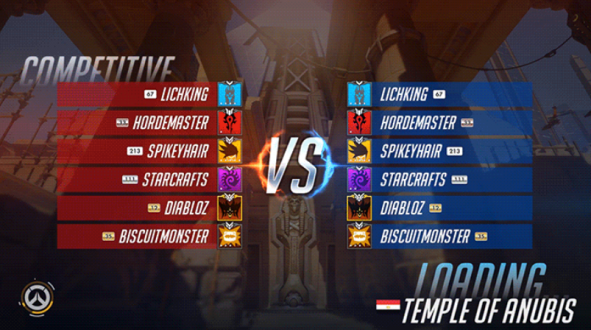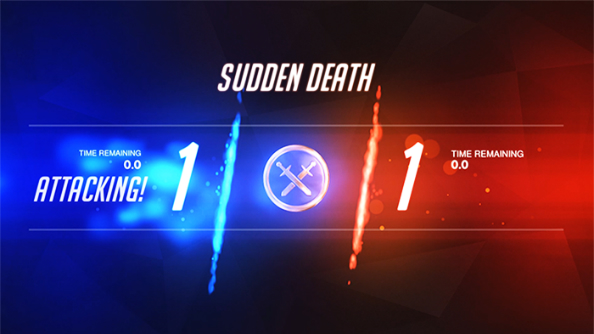Overwatch saw huge success with its open beta, and later its release, but the release of competitive play has been plagued by problems. Here are five lessons Overwatch can benefit from learning.
Following a release in the last fortnight, Overwatch‘s competitive play mode has been met with mixed reactions.
Some players have been rejoicing at the ability to finally have access to a ranking system and a team focused on winning. Others, however, have had their experience sullied by a series of issues.
Here are five lessons that Overwatch needs to learn to ensure the competitive play experience is not entirely awful.
1. Leavers are a huge issue
The last thing you want in any competitive mode is players who leave the game halfway through or just give up. Given the nature of competitive play, Overwatch can’t fill the empty spots with extra players should one of your teammates disconnect.
Ordinarily, these leavers aren’t such an issue. Developers can put mechanics in place to punish offending players, which minimises the frequency of encountering leavers.
When playing competitive in Overwatch, you are likely to find a leaver in 8 out of 10 games. This is an enormous amount.
One leaver on your team can tip the match in the enemy’s favour and likely cause other teammates to leave. I’ve lost count of the times I’ve found myself in a 1v6 scenario.
The game is very eager to let you know that someone has left, too. A big red banner lets you know precisely when you can leave without a penalty. This needs to go. It primes people into leaving what could be a simple 5v6 victory, affording everyone a loss.
There needs to be a significant, tangible penalty. As it stands, the collective impact to the innocent members of the team grossly outweighs the penalty on the leaver.

2. Hero balance comes first
Balance isn’t something that’s easily attained in games like these. It can take years and then one inventive strategy throws everything out the window. Because of the difference between console and PC hardware, the game needs to be balanced accordingly. This is something that Blizzard are reportedly working on. But it needs to come sooner.
Enter the competitive mode while balance is up in the air. Something that was frustrating in quick play is now an epidemic. With four roles and 21 heroes, each hero should be able to carve their niche and maintain a balance between the roles. For example, defence heroes stop offence heroes, tank heroes push past defence heroes, and so on.
Right now, there is a general sense that some heroes are just better. Flat out better. And it’s very easy for certain heroes or combinations to put your team in a no-win situation.
3. Graphics are important
Nope. I’m not referring to the presentation of the game. I’m talking specifically about certain graphical elements Overwatch employs. I’ve already mentioned the big red bar to help you escape a game with a leaver but there are countless more.

Players are invested in their online personas. That much has been clear for some time. Even more so when said persona is tied with a ranking that, in numerical terms, quantifies them as better or worse than any other given person.
Players don’t like losing – who would? This is an important point because Overwatch almost relishes the opportunity to show you sliding down the MMR ladder. For some reason you fall further after fighting 1v6.
This is a mistake. In a game riddled with so many potential frustrations, the last thing an agitated gamer needs is to have his or her loss presented with so much gusto.
It’s perplexing because the game was only too happy to dole out a warning about leaving games early on my main menu. At which point, I hadn’t left a game early. A lot of the time, this combination of different graphics makes Overwatch look like a smarmy adolescent than a video game.
As much as there are plenty of questionable stylistic choices, there are good ones in there. The competitive mode feels important. From the change in music to the intense electric menus, there is a definite sense that it’s more serious than quick play. Keep that.
4. The game needs to be transparent
A game with eSports aspirations needs to be wholly transparent. In the case of Overwatch, that means players need to be able to easily access numbers about mechanics, and those numbers need to make sense.
Overwatch is obviously trying to make the learning curve less steep. With that, they succeed. You’re rushed through a quick tutorial and given access to a shooting range. Beyond that, you’re good to go.
There’s a small menu with concise descriptions of skills readily available at all times. Super.

When competitive play hits the scene, however, players are being expected to team up, sink hours into developing strategies, and compete against one another.
To do this effectively, they need to have complete information. “Fires an arrow that splits on impact” is insufficient as a description when I’m trying to decide between hitting someone square on with Hanzo or using the floor to split.
I need to know how much a fully-charged Widowmaker shot does and how much Mercy can boost the power. And I shouldn’t need to wade through the various wiki pages on the game to find this. It should be readily available.
Overwatch has a dubious past with this sort of information already. Upon release, rather than giving players access to the plot, cartoons about why we should care about these people were displayed online prior to release. I’ve said it before and I’ll say it again: if there’s something you want me to know, put it in the game.
5. Cultive your player base
As the new kid on the block, Overwatch needs to put a focus on growing its competitive player base. Blizzard can’t rely on a 100% conversion rate from quick play to competitive play. Of those who do convert, not all of them will take up the game seriously. Again, if Blizzard expects people to fuel the high level play, it needs to remove as many barriers to entry as it possibly can.
So much of taking up a game seriously is the belief that becoming a competitive player is achievable. However mistaken that belief may be. This is why the professional scene is a major advertising point for League of Legends, and why DotA 2 takes so many steps to highlight major events.

Overwatch‘s tips are possibly the easiest play to see this effect. Even in the options there isn’t an option to have more advanced tips. Tips are displayed on loading screens and are a great way to communicate helpful titbits to players.
Newer players can really benefit from “If you enter an area covered by a Widowmaker, move unpredictably.” But the “Snipers snipe people” platitude gets pointless fast. These tips can be repurposed into meaningful strategic education to help players and teams bolster their knowledge.
A shaky start for a titles whose eSports aspirations were telegraphed upon release.
With new patches making their way to Blizzard’s public test servers, we may see some changes coming through. Or maybe the glossy shine of a new character will help distract players from the real issue here.
